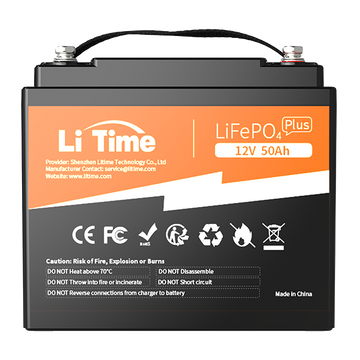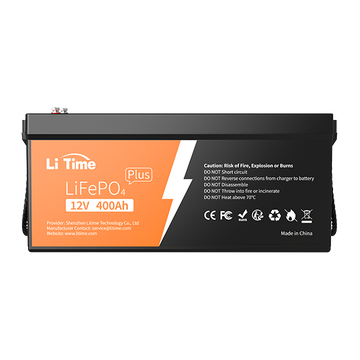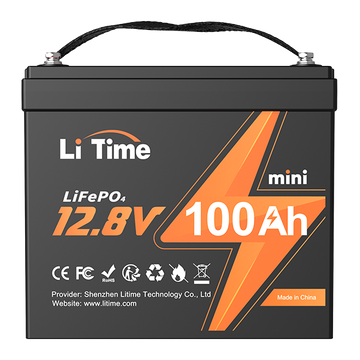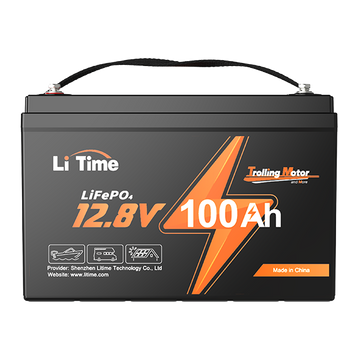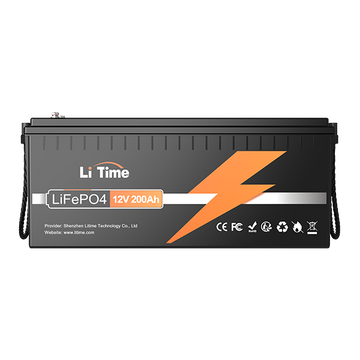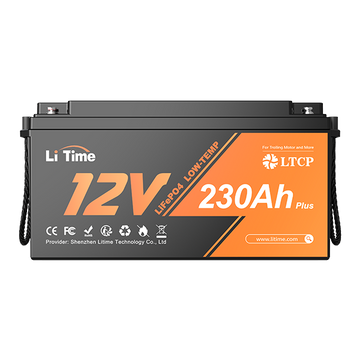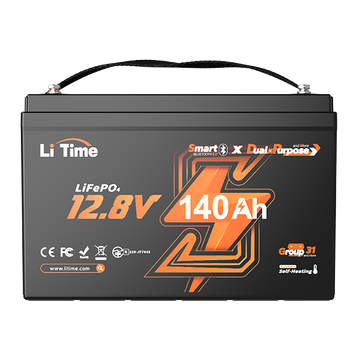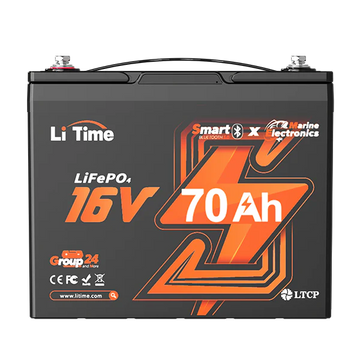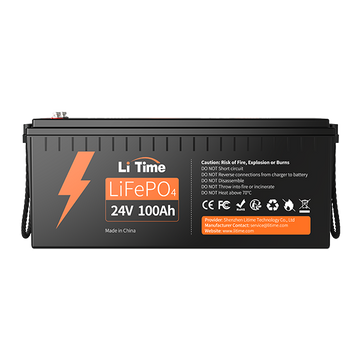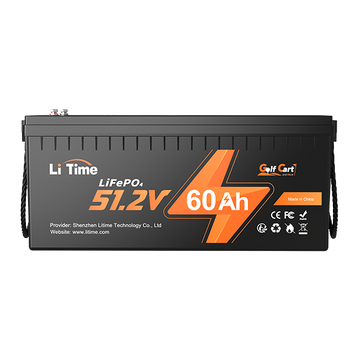One of the most important indicators when choosing a battery is its capacity. However, surprisingly few people have a correct understanding of what "battery capacity" actually means and how to calculate it.
In this article, we will clearly explain everything from the basics of "what is battery capacity?" to the difference between ampere-hours (Ah) and kilowatt-hours (kWh), how to calculate capacity, estimated usage time, and how to choose a battery that suits your needs.
1. What is battery capacity? Ah and kWh
Taking the LiTime lithium iron phosphate battery as an example, the "Product Specifications" section lists information such as the rated capacity (Ah) and energy (W/watts), which can be used as a reference when selecting a battery.

1. What is battery capacity (Ah)?
"Ah (ampere-hour)" is a unit that represents the amount of electric charge a battery can deliver.
For example, a 10Ah battery means that it can supply 1A of current for 10 hours, or 10A of current for 1 hour.
However, Ah only indicates the "amount of charge" and does not represent the actual "amount of energy." To know how much usable energy you have, you also need to consider the battery voltage (V).
2. What is kWh (kilowatt-hour)?
"kWh (kilowatt-hour)" is a unit of electrical energy itself.
1kWh is the amount of energy used when 1000W of power is consumed for 1 hour. For example, a 1kWh battery can run a 1000W appliance for 1 hour.
2. Ah to kWh Calculation & conversion chart
Ah to kWh Calculation
Ah (ampere-hours) alone does not allow for accurate comparison of the energy stored in different batteries. It must be combined with voltage (V) to obtain a practical energy value in kWh.
kWh = Ah × Voltage ÷ 1000
Example 1: Car battery
Voltage : 12V
Capacity : 100Ah
→ 12 × 100 ÷ 1000 = 1.2kWh
Example 2: Electric bike battery
Voltage : 48V
Capacity : 50Ah
→ 48 × 50 ÷ 1000 = 2.4kWh
→ We can see that the higher the voltage, the more energy can be supplied even with a smaller Ah rating.
Ah to kWh conversion chart
If you don't want to calculate your battery capacity yourself, here's a table that lists the corresponding kWh (kilowatt-hours) for common Ah (ampere-hours) values at different voltages (V).You can easily look up the value you need.
| Ampere-hours (Ah) | kilowatt-hours (12V) | kilowatt-hours (24V) | kilowatt-hours (36V) | kilowatt-hours (48V) |
|---|---|---|---|---|
| 1 Ah | 0.012 kWh | 0.024 kWh | 0.036 kWh | 0.048 kWh |
| 60 Ah | 0.72 kWh | 1.44 kWh | 2.16 kWh | 2.88 kWh |
| 100 Ah | 1.2 kWh | 2.4 kWh | 3.6 kWh | 4.8 kWh |
| 140 Ah | 1.68 kWh | 3.36 kWh | 5.04 kWh | 6.72 kWh |
| 200 Ah | 2.4 kWh | 4.8 kWh | 7.2 kWh | 9.6 kWh |
| 300 Ah | 3.6 kWh | 7.2 kWh | 10.8 kWh | 14.4 kWh |
Why do manufacturers use Ah and Wh notations?
● When expressed in Ah (ampere-hours) : The focus is on how much current the battery can supply and for how long (runtime).
● When expressed in Wh (watt-hours) or kWh (kilowatt-hours) : The focus is on the total energy the battery can deliver. This is useful when comparing products with different voltages.
3. How to know/calculate battery capacity
How to know battery capacity?Battery capacity (kWh) is an indicator of how much energy a battery can store. By combining this capacity with the power consumption (kW) of the device you want to run, you can estimate how long the battery will power that device.
The calculation formula is as follows:
Usable time (h) = Battery capacity (kWh) ÷ Device power consumption (kW)
For example, what is 80Wh battery capacity?a 80Wh battery can deliver 80 watts for 1 hour,or 40 watts for 2 hours,or 20 watts for 4 hours.
4. Major use cases for converting Ah to kWh
By converting battery capacity (Ah) to kWh, you can get a more accurate understanding of how much usable energy you actually have.
Here, we will explain the calculation method in an easy-to-understand way using three common everyday scenarios as examples.
① When you want to know the usable time [Operating time of electrical appliances]

1. Example: Using a fridge while car camping
For example, consider a small refrigerator, which is often used for car camping or overnight stays in your vehicle. The power consumption of a small fridge is about 60W (0.06kW).
In contrast, LiTime's 12V 100Ah battery can store 1.2kWh of energy, calculated by multiplying voltage by capacity.
→ 1.2 kWh ÷ 0.06 kW = Usable for approximately 20 hours
However, the actual usable time is often shorter than this theoretical value due to factors such as the battery's depth of discharge (DOD), ambient temperature, and how often the fridge compressor cycles on and off.
Even so, this calculation is a helpful guideline when deciding “how much capacity is enough.”
2. Example: Using an electric blanket with a portable power system
Heating devices such as electric blankets use a lot of electricity, for example 1000W (1kW).
For a 24V 100Ah battery, the battery capacity is: 24V × 100Ah ÷ 1000 = 2.4kWh.
→ 2.4 kWh ÷ 1 kW = Usable for approximately 2.4 hours
Electric blankets are often used together with emergency power supplies during winter camping or in disaster situations. Knowing the estimated runtime makes it easier to picture how much battery capacity you’ll really need.
If you want to use high-power devices for longer, consider increasing your total battery capacity.
② When you want to calculate the range of an electric motorcycle

You can estimate the approximate travel distance based on the battery capacity and the vehicle’s efficiency (distance traveled per kWh).
For example, if we assume that an electric car equipped with a 36V 10Ah battery can travel 20km per kWh, the total energy = 10Ah × 36V ÷ 1000 = 0.36kWh.
→ Range = 0.36kWh × 20km/kWh = approximately 7.2km
*Please note that the actual travel distance will vary with road conditions, load, temperature, and riding style, so this should only be used as a rough estimate.
3. When charging with a solar panel [Estimate the number of days required]

If you have a large battery, you also need to think about how long charging will take.
For example, a 24V 100Ah battery has a capacity of approximately 5.12kWh.
If the average daily solar power generation is 3kWh,
→ 5.12 kWh ÷ 3 kWh/day = It takes about 1.7 days to fully charge
*In reality, solar generation varies with weather and season, and charging efficiency is not 100%, but this gives a useful reference when designing and planning your solar system.
How parallel and series connections increase battery capacity
By combining multiple batteries, you can achieve a higher overall capacity or voltage. There are two main connection methods: parallel connection and series connection.
● Parallel connection : Connect batteries of the same voltage, positive to positive and negative to negative, so that the capacities (Ah) add up. This is useful when you want to extend runtime without changing the system voltage.
● Series connection : Connect the positive terminal of one battery to the negative terminal of the next battery so that the voltages add up. The capacity (Ah) stays the same, and this method is used when higher voltage is required.
* Please note that for either type of connection, it is important to use batteries with the same specifications and in similar condition, and to manage them properly for balance. Incorrect wiring or mismatched batteries can lead to malfunctions and safety risks.
● For example, let's look at using two 12V 100Ah batteries.
In the case of parallel connection
Connect the positive terminals together and the negative terminals together on the two batteries.
In this case, the voltage remains 12V but the capacity increases to 100Ah + 100Ah = 200Ah.
The total energy is
12V × (100Ah + 100Ah) ÷ 1000 = 2.4kWh.
In other words, parallel connection doubles the capacity and therefore doubles the amount of energy that can be stored.
In the case of series connection
Connect the positive terminal of the first battery to the negative terminal of the second battery.
In this case, the capacity remains 100Ah, but the voltage increases to 12V + 12V = 24V.
The total energy is
(12V + 12V) × 100Ah ÷ 1000 = 2.4kWh.
As you can see, although the total battery energy (kWh) is the same for both parallel and series connections, the combination of voltage and capacity (Ah) is different. It’s important to choose the connection method that best matches your application.
Summary | Understand battery capacity correctly and choose the right one for your needs
Battery capacity depends greatly on how you use the battery, the voltage, and the connection method. The key to choosing the right battery is not just the capacity number, but how long it can realistically power your devices.
- kWh = Ah × Voltage ÷ 1000
- Know the typical power consumption for each use case
- Use parallel and series connections to flexibly build the voltage and capacity you need
🔋 LiTime LiFePO4 Battery are safe, long-lasting, and high-capacity, making them ideal for campers, of-grid setups, and as backup power in case of outages.
